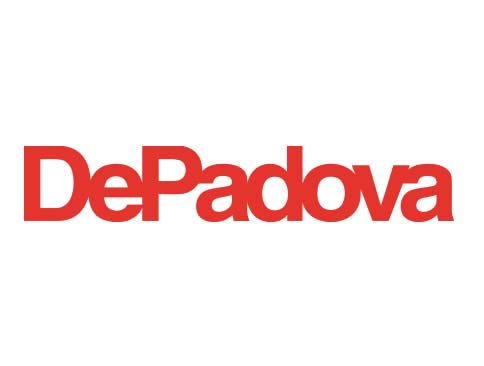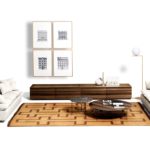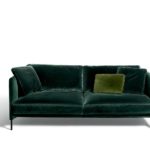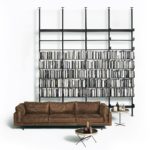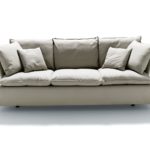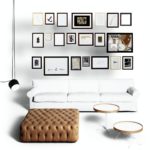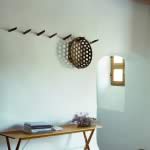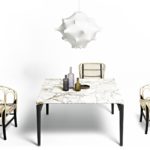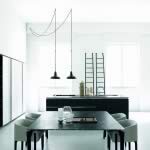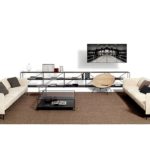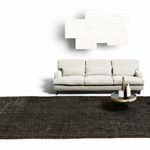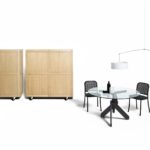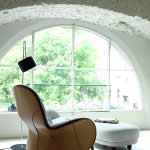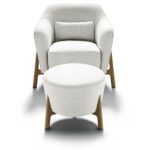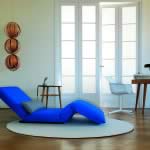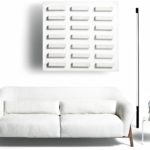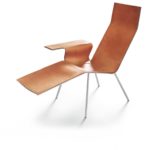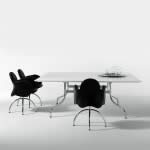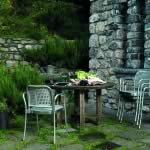The history of De Padova spans all decades from the 1950s onwards, with unchanged elegance and sophistication.
In the 1950s, Fernando and Maddalena De Padova started their entrepreneurial business by importing Scandinavian furniture and objects sold in the showroom in via Montenapoleone in Milan. For the first time, northern European design arrives in Italy: its simplicity and rigor become a new possible proposal in the field of design.
In the 1960s, during a trip to Basel, Maddalena De Padova accidentally discovered Charles Eames’ Wire Chair; in a few months, Maddalena meets the American company Herman Miller from which she obtains the production license for Italy of the products designed by Charles Eames and George Nelson. ICF De Padova is founded, based in Vimodrone, which will produce Herman Miller office furniture in Italy. From this meeting Maddalena De Padova absorbs the secrets that will constitute the heart of her philosophy: the importance of the environmental context by George Nelson, the “connections” by Charles Eames, the role of objects by Alexander Girard. The large showroom in Corso Venezia in Milan is inaugurated, an extraordinary exhibition space on three levels, where design becomes the protagonist.
After Fernando’s death, Maddalena De Padova personally takes care of the company, follows its production activity and distribution; ICF is sold and a new company is founded which focuses on the edition of new furnishings, its name: Edizioni De Padova, then simply E ’De Padova. Vico Magistretti began his long collaboration with the company in these years by designing a collection of office furniture with its usual elegance; it will be the beginning of a happy partnership that will enrich the De Padova catalog with many masterpieces that have entered the history of Italian design: from the Silver chair, to the Vidun table, from the Pillow sofa to the Shigeto container.
Achille Castiglioni designs a series of displays for the windows that confirm the uniqueness of the company’s style, the true theatrical staging of design, where the windows overlooking Corso Venezia become a unique stage on the Milanese and then world design scene; settings played on irony, creativity and awareness of wanting to tell a story. Castiglioni also designs some pieces of great beauty for the collection, such as the 95 table and the Scrittarello desk. He joins the Dieter Rams group: Maddalena De Padova falls in love with her 606 bookcase and decides to produce aluminum for the Italian market: the 606 bookcase still remains the best example in the world of a container for storing books.
At the end of the 90s the collaboration with Renzo Piano began for the furnishing of the café of the Center Georges Pompidou in Paris, followed by, among others, the furnishing of the Morgan Library restaurant in New York and the Sole 24 Ore headquarters in Milan: all the most elegant domestic or business interiors perfectly fit the furnishings of the De Padova catalog. In the 2000s Maddalena De Padova received the Compasso d’Oro for Lifetime Achievement and reopened the space of the former I.C.F. factory, completely renovated and enlarged, which became the company’s headquarters. Patricia Urquiola and Nendo join the team designers alongside the historical collection. Maddalena De Padova completes the transfer of the company’s leadership to the children Valeria and Luca who further develop it by giving it a managerial structure. In April 2015, the company was acquired by Boffi, which allows the company an international distribution program, with the passion and all-Italian heritage that unites them.
De Padova remains firmly an example of Italian timeless elegance, where a correct balance, excellent design and great respect for the Italian design tradition continue to furnish the houses and the most refined spaces of Italians and now also all over the world, in furrow of the choices, still very current, of Maddalena De Padova.
